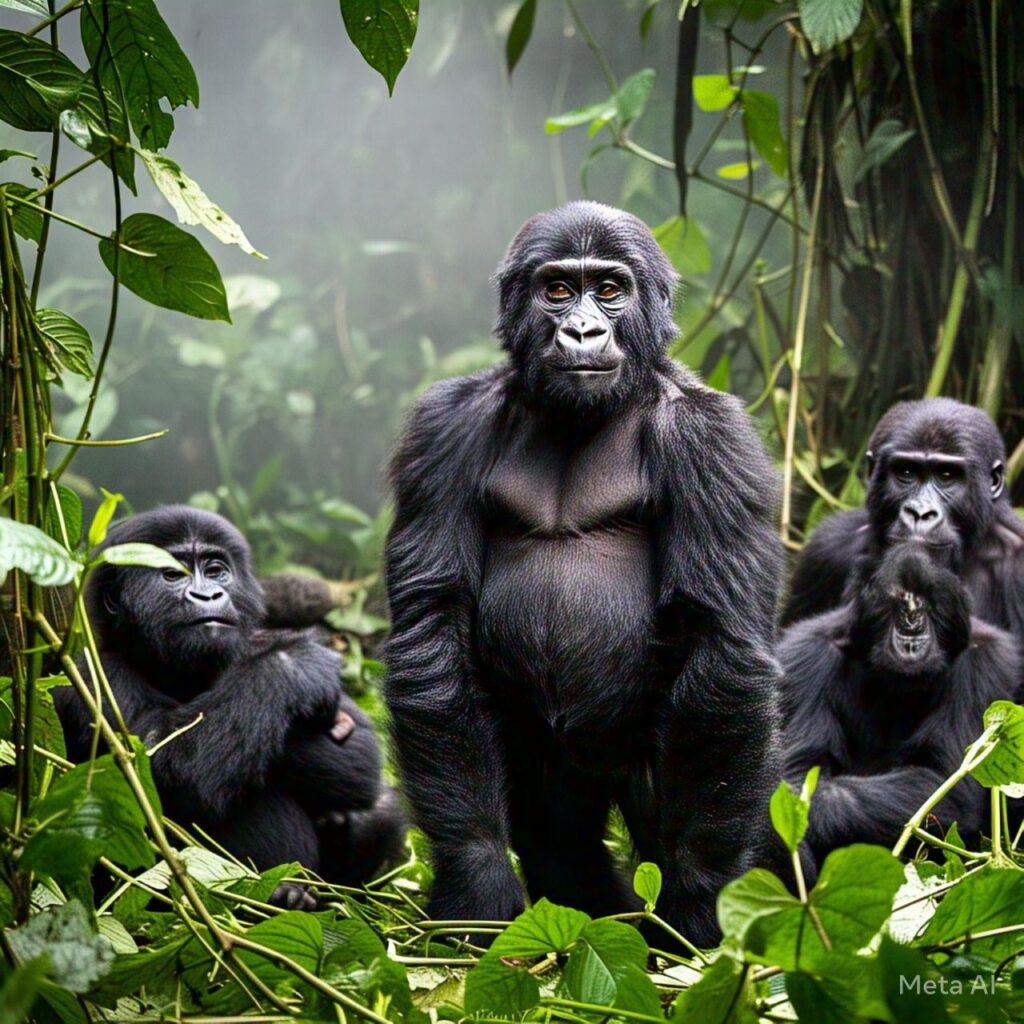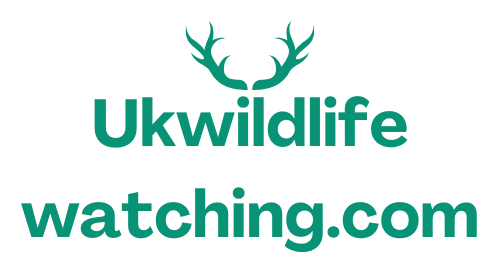Introduction
lowland gorillas: In the lush rainforests of Central Africa, the mighty lowland gorilla roams – an awe-inspiring symbol of power and intelligence. Yet, these magnificent creatures are facing a silent crisis. With populations declining due to habitat loss, poaching, and human encroachment, the survival of both western and eastern lowland gorillas hangs in the balance.
Did you know that there are fewer than 350,000 western lowland gorillas left in the wild, while the eastern lowland gorilla population has dropped to less than 5,000? These gentle giants play a vital role in their ecosystem, and their decline signals a dire need for conservation.
Table of Contents

In this article, we’ll learn about:
✔ Interesting facts about lowland gorillas
✔ Where they live and what they eat
✔ Why they’re endangered (including the shocking connection between cell phones and gorilla extinction)
✔ How you can help protect these incredible primates
Mighty Lowland Gorillas: Nature’s Powerful Gentle Giants
Strength and Intelligence: Titans of the Rainforest
Lowland gorillas stand as the largest primates on Earth, commanding both awe and respect in their natural habitats. These incredible creatures are led by enormous silverback males, which can weigh up to 400 pounds of pure muscle—more than six times the strength of the average human. Yet, despite their formidable power, lowland gorillas are surprisingly gentle, intelligent, and highly social animals.
The Strength of a Gorilla: More Than Just Muscle
The bite force of a silverback is measured at 1,300 PSI—stronger than that of a lion.
They can bend steel bars and uproot small trees with ease.
Still, they rarely use their strength aggressively, preferring peaceful conflict resolution within their family groups.
Gorilla Intelligence: Closer to Humans Than You Think
Gorillas aren’t just strong—they have remarkable cognitive abilities:
They recognize themselves in the mirror, a sign of self-awareness.
They learn sign language (famous gorillas like Koko knew more than 1,000 signs).
They mourn their dead, showing their deep emotional connections.
“In the wild, western lowland gorillas have been observed using sticks to check the depth of water and stones to break nuts—evidence of their problem-solving skills.”
Lifespan and Behavior: Gorillas’ Social Lives
How long do lowland gorillas live?
In the wild: 35-40 years (if they avoid predators and disease).
In captivity: Up to 50+ years (with proper care, such as the famous gorilla Ozzie, who lived to be 61 years old).
Gorilla communication: more than just growls
Gorillas have complex social structures and communicate in fascinating ways:
Chest beating – not a sign of aggression, but a way for silverbacks to establish dominance or warn off rivals.
Vocalization – over 25 different sounds, from murmurs to alarm barks.
Body language – subtle gestures like puckering lips (contentment) or staring (warning).
DNA similarity: our closest cousins
Gorillas share 98% of their DNA with humans, making them one of our closest living relatives (after chimpanzees and bonobos). This genetic closeness explains their:
Emotional depth (they laugh, grieve, and form lifelong bonds).
parenting style (gorilla mothers care for their babies for 3-4 years).
Did you know? Gorillas use tools! While tool use was once thought to be a uniquely human trait, gorillas have proven the opposite:
Sticks as probes – they test the depth of water before crossing swamps.
Stones as hammers – they break open hard-shelled fruits.
Leafy canopies – some gorillas use broad leaves to protect themselves from the rain.
“Researchers in Congo observed one gorilla using a stick to catch ants, showing advanced problem-solving skills.”
How you can help save these incredible primates
Lowland gorillas are critically endangered because of:
Habitat loss (logging, farming and mining).
Poaching (wild meat trade and trophy hunting).
disease (Ebola has killed thousands).
📚 Want to dive deeper into gorilla intelligence? Check out “The Hidden Life of Gorillas” on Amazon – a portion of sales supports wildlife research.
🌍 Adopt a gorilla through the Dian Fossey Fund and help fund anti-poaching patrols.
Final Thoughts
Lowland gorillas aren’t just strong – they’re intelligent, passionate, and vital to our planet’s biodiversity. By learning about them and supporting conservation, we can ensure these gentle giants continue to thrive for generations.
Will you join the effort to save them? 🦍💙

Habitat and distribution of the lowland gorilla: the last stronghold of an endangered species
Where do western lowland gorillas live?
Western lowland gorillas (Gorilla gorilla gorilla) inhabit the lush, biodiverse rainforests of Central Africa, with their area concentrated in the Congo Basin – the second largest tropical rainforest on Earth after the Amazon. Major countries include:
Gabon (home to over 60% of the population)
Cameroon (particularly Campo-Maan and Lobéké National Parks)
Republic of Congo (Odzala-Kokoua and Nouabalé-Ndoki National Parks)
Central African Republic (Dzanga-Sangha Protected Area)
Equatorial Guinea (Monte Alén National Park)
These gorillas thrive in lowland tropical forests, swampy clearings and secondary forests, often near rivers where food is abundant.
Why This Habitat Is Important
The Congo Basin acts as a carbon sink, which mitigates climate change.
Gorillas maintain forest health by dispersing fruit tree seeds.
Their presence indicates a healthy, intact ecosystem.
Where do eastern lowland gorillas live?
The eastern lowland gorilla (Gorilla beringei graueri), also known as Grauer’s gorilla, has a very small range, restricted to the eastern Democratic Republic of Congo (DRC). Their last strongholds include:
Kahuzi-Biega National Park (a UNESCO World Heritage Site)
Maiko National Park
Itombwe Massif
Taina Nature Reserve
Unlike their western cousins, Grauer’s gorillas live in both lowland and mountain forests, ranging in elevation from 600 to 2,900 meters.
Significant differences in habitat
Characteristic Western lowland gorilla Eastern lowland gorilla
Altitude Lowland forest (0-1,000 m) Lowland and montane forest (up to 2,900 m)
Diet More fruit-dependent More foliage-dependent
Range size Widespread distribution Limited to eastern DRC
Threats to gorilla habitat: Shrinking world
- Deforestation: Biggest threat
Logging – Industrial timber extraction destroys nesting and feeding grounds.
Agriculture – Slash-and-burn farming for palm oil and cocoa encroaches on forests.
Mining – Coltan (used in smartphones) and gold mining lead to habitat fragmentation.
“More than 80% of the eastern lowland gorilla’s range has been lost since the 1990s due to mining and war.”
- Human-wildlife conflict
As forests shrink, gorillas raid crops, leading to retaliatory killings.
The bushmeat trade targets gorillas for illegal meat markets.
- Climate change
Changes fruiting seasons, disrupting food supplies.
Increases disease prevalence (e.g., Ebola).
How you can help protect gorilla habitats
- Support reforestation efforts
🌿 Donate to the Rainforest Trust to fund protected areas. - Choose sustainable products
Look for FSC-certified wood and deforestation-free palm oil.
Recycle old electronics to reduce demand for conflict minerals.
- Ethical wildlife tourism
Visit Dzanga-Sangha (CAR) or Kahuzi-Biega (DRC) – tourism funds conservation.
- Spread awareness
Share this article with #SaveGorillaForests.
Follow @GorillaDoctors for rescue updates.
Conclusion: A race against time
Lowland gorillas are struggling to survive in Africa’s disappearing rainforests. Their fate depends on:
✔ Stopping deforestation
✔ Combatting poaching
✔ Supporting conservation NGOs
Will you join the fight to save their homes? Every step counts. 🌍🦍

The Gourmet Gorilla: A Deep Dive Into the Diet of the Lowland Gorilla
What’s on the Menu for Lowland Gorillas?
Lowland gorillas are the rainforest’s finest plant-powered behemoths. While they can easily overpower most animals, these gentle herbivores survive on an all-natural, 100% green diet – with a few surprising exceptions.
Western lowland gorillas: fruit connoisseurs
(Gorilla gorilla gorilla)
This subspecies enjoys the rainforest buffet, preferring:
🍌 Fruit (50-60% of diet) – especially figs, mangoes and wild berries
🌿 Leaves and stems – young, tender leaves from more than 100 plant species
🌳 Bark and pulp – eaten during the dry season when fruit is scarce
🐜 Occasional insects – termites and ants for extra protein (less than 1% of diet)
“In Gabon’s Loango National Park, researchers filmed gorillas carefully peeling bark to access the nutrient-rich cambium – a rare tool-use behavior.”
Eastern Lowland Gorillas: Salad Specialists
(Gorilla beringei graueri)
With less fruit available in their highland forests, Grauer’s gorillas adapt by eating the following:
🥬 More leaves and terrestrial herbs (up to 70% of the diet)
🎋 Bamboo shoots – a staple food in Kahuzi-Biega National Park
🍄 Occasionally fungi – some groups eat wild mushrooms
(Unlike western gorillas, they rarely eat insects)
A Day in the Life of a Gorilla Foodie
6:00am – Breakfast: Feast on figs in the canopy
10:00am – Mid-morning snack: Young leaves
1:00pm – Lunch: Stems and bark while resting
4:00pm – Afternoon snack: More fruit if available
7:00pm – Dinner: Chewing again gone vegetation (they regurgitate some of the food and eat it again!)
Did you know?
Silverbacks eat 40+ pounds per day – that’s 10% of their body weight!
Gorillas spend 6-8 hours a day eating (while humans eat 1 hour).
How their diet shapes the rainforest
Gorillas are master gardeners:
🌱 Seed dispersers – they spit out intact seeds up to 1 km away from parent trees
✂️ Natural pruners – their selective feeding promotes plant diversity
💩 Fertilizer producers – their dung enriches the soil with nutrients
“Without gorillas, more than 30 tree species in the Congo Basin could disappear.”
Threats to gorillas’ food sources
1️⃣ Deforestation – logging eliminates fruit trees
2️⃣ Climate change – shifts in fruiting seasons
3️⃣ Human competition – bushmeat hunters steal their food
🎥 See these attractive feeders in action in the Congo episode of “Planet Earth III.”
How you can help protect gorilla diets
✔ Support organic, deforestation-free chocolate (cocoa farms encroach on habitat)
✔ Donate to Gorilla Doctors – they monitor nutrition in wild populations
✔ Turn food waste into compost – reduce pressure on agricultural land expansion
Next time you eat a banana, remember – you’re sharing your favorite food with Earth’s largest primate! 🍌🦍
Gorilla vs. Human Diet
Nutrients Gorilla (Daily) Human (Daily)
Fiber 100+ g 25-30 g
Protein 60 g (Plant Based) 50-80 g
Calories 4,500-6,000 2,000-2,500
Would you like a gorilla inspired vegan recipe section? I can share plant based meals approved in the jungle! 🌿
Why are lowland gorillas endangered?
- Habitat destruction
Logging, farming and urban expansion destroy 2-3% of gorilla habitat each year. - Poaching and bushmeat trade
Gorillas are killed for meat, trophies and traditional medicine. - Diseases (such as Ebola)
Ebola outbreaks have wiped out thousands of gorillas in the past decades. - Mining and cell phones (shocking connection!)
Coltan mining (used in smartphones) destroys gorilla habitats.
Armed groups control the mines, leading to a rise in poaching.
“According to conservationists, every cell phone purchase indirectly threatens gorilla habitats.”
📱 Buy fair-trade electronics from ethical brands to reduce demand for conflict minerals.
How can you help protect gorillas?
- Support conservation groups
Donate to WWF, the Dian Fossey Fund, or Gorilla Doctors.
- Choose sustainable products
Avoid palm oil (linked to deforestation).
Use eco-friendly electronics.
- Spread awareness
Share this article!
Follow #SaveTheGorillas on social media.
- Ethical tourism
Visit sanctuaries and national parks that fund conservation.
🦍 Adopt a gorilla through the Dian Fossey Fund.
Conclusion
Lowland gorillas are powerful, intelligent and critically endangered. Without urgent action, we risk losing them forever. By supporting conservation, shopping ethically and spreading awareness, you can help ensure these majestic primates survive for generations.

Will you join the fight to save them? 🌍
>>>>>> You may also find this information interesting.>>>>>>
